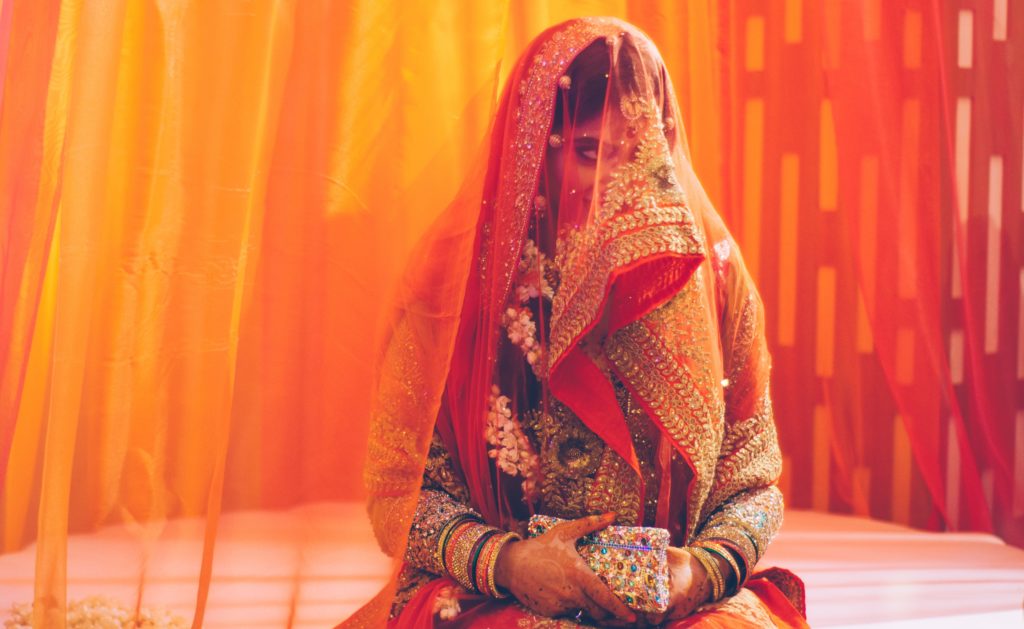You are ready to launch your product in global markets. You’ve nailed it at home and are ready to replicate it around the world. That should be easy, right? Just take what worked here, get some help with language localization, and go.
It’s time for your advertising campaign. You want to convey a happy wedding couple, just starting out, with all the optimism, joy, and hope of the day. You’d like to trigger an emotion that signifies tradition and familiarity through the images and colors you use. Weddings – new beginnings, joy, happiness, optimism. The bride dressed in red, the couple with beaming faces.
Wait, what? Red? Where are we?
Did you notice where your mind automatically went when I mentioned a wedding? Did you think I was going to say the bride was dressed in white? If so, you are likely steeped in Western tradition, where rows and rows of white wedding dresses hang in bridal shops and represent the day – probably more than any other symbol.
Wedding attire is a very simple example of how culture is conveyed and tradition is followed from generation to generation. If your goal is to communicate certain feelings, it’s important to understand how color has different meanings from country to country.
Now let’s say that you are representing sadness, mourning, perhaps a funeral. You are from the West, so naturally, you go to black. White, often used for weddings, peace, purity ‘the good guy’, doesn’t come to mind. A somber group, dressed in black, gathers together. But if you are in China or India, white is most likely the color that you would use. In those countries, white symbolizes mourning, death, sorrow, unhappiness, and misfortune.
But some colors should be safe to convey meaning across cultures and continents, right? Green, for instance. Around the world green represents new birth, beginnings, hope, and regeneration. In some countries it symbolizes wealth and prestige. At worst, it could be used to show jealousy or greed.
Not so simple, unfortunately. In northern Africa green can represent the drug culture and corruption, and in South America, death.
Take a look at the following information to see how color will often suggest the same meaning across countries, but can also represent radically different things.
RED

China – good luck, celebration, summoning, vitality, happiness, long life, wedding color, festive occasions, Chinese New Year
India – purity
Eastern – worn by brides, happiness, prosperity, celebration, good fortune, vitality
Western – excitement, danger, love, passion, stop (red light), Christmas (with green), Valentine’s Day, communism when associated with the former Eastern bloc countries
Middle East – danger, caution, evil
PINK
Eastern – marriage, feminine
Western – love, romance, babies (especially female babies), Valentine’s Day
Latin America – can be associated with architecture since many buildings are painted pink
GOLD
Eastern – wealth, strength
Western – wealth
YELLOW
China – nourishing, royalty, sacred, honor, masculine
India – merchants, commerce, sacred
Eastern – proof against evil, for the dead, sacred, imperial, masculinity
Western – cheerful, joy, hope, hazards, caution, cowardice, weakness, taxis and school buses
Latin America – death, mourning
Middle East – happiness, prosperity, mourning
Africa – usually reserved for high-ranking people
GREEN

China – green hats imply a man’s wife is cheating on him, exorcism
India – Islam
Islam – perfect faith
Eastern – eternity, family, health, prosperity, peace, hope, life
Western – Spring, new birth, go (green light), St. Patrick’s Day, Christmas (with red), money, luck, jealousy, greed, nature and environmental awareness
Northern Africa – drug trade and corruption
Latin America – death
BLUE
China – immorality
Eastern – wealth, feminine, healing relaxation
Western – trust, conservative, corporate, depression, sadness, calm
Middle East – mourning, heaven, spirituality
Indian – The color of Krishna, used by many sports teams as a symbol of strength
Latin America – Often associated with religion as the color of the Virgin Mary’s headscarf or robe, associated with mourning, trust and serenity in Mexico
PURPLE

Eastern – wealth, privilege, spirituality
Western – royalty, spirituality, wealth
Middle East – wealth, virtue, royalty
WHITE
China – death, mourning
India – unhappiness
Eastern – funerals, helpful people, children, marriage, mourning, peace, travels
Western – brides, angels, good guys, hospitals, doctors, peace (white dove)
BLACK
China – color for young boys
Eastern – career, health, prosperity, stability, knowledge, mourning, penance, evil
Western – funerals, death, Halloween (with orange), bad guys, rebellion, intimidation
Middle East – mystery, mourning, rebirth
GREY
Eastern– helpers, travel
Western – boring, dull, plain
Using color isn’t as simple as it seems it should be. Where does this leave you as you expand to new markets? If you take the steps to localize your product and marketing efforts, you should be able to not only avoid pitfalls, but be able to communicate the emotions and familiarities you’re aiming for by using color.
To be truly successful, it is always a good idea to use people who are experts in local culture to assist you in your marketing efforts, not only for color, but for language, images, and many other cultural aspects.
About Globig
If you have international offices with employees and business teams focused on foreign markets, the Globig platform is a must for saving valuable time and money, and for managing risk.
Want to learn more? We want to help.
